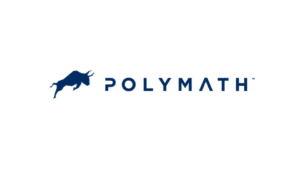In a world where personalization reigns supreme, traditional industries like insurance are undergoing a massive transformation to keep up with changing customer expectations. Enter Insurance-as-a-Platform (IaaP), a revolutionary approach that leverages technology to deliver hyper-customized insurance products in real-time. This innovative model promises to redefine how insurance operates, making it faster, more flexible, and deeply tailored to individual needs.
What is Insurance-as-a-Platform (IaaP)?
Insurance-as-a-Platform (IaaP) is a digital framework that integrates advanced technologies such as artificial intelligence (AI), machine learning (ML), cloud computing, and data analytics to deliver highly personalized insurance solutions. Unlike traditional insurance models that rely on standardized policies, IaaP allows providers to create and modify products on the fly, catering to the unique requirements of each customer.
Think of IaaP as a digital marketplace where insurers, customers, and third-party service providers come together. The platform collects and processes real-time data to design insurance products that match an individual’s current needs, whether it’s a travel policy tailored for a weekend trip or coverage for a specific health condition.
How Does IaaP Work?
IaaP operates through a seamless blend of technology and data. Here’s how it works:
Data Collection: IaaP platforms continuously gather data from various sources, including wearable devices, smart appliances, social media, and customer interactions. This rich pool of data provides insights into individual lifestyles, preferences, and risks.
Real-Time Analytics: Advanced algorithms analyze this data to assess risks and predict customer needs. For example, if someone frequently travels for work, the platform might suggest a dynamic travel insurance policy.
Dynamic Product Creation: Based on the analysis, the platform generates insurance policies tailored to the customer’s unique situation. These policies can be activated, adjusted, or canceled in real-time.
Seamless Integration: Through APIs (Application Programming Interfaces), IaaP integrates with third-party platforms like e-commerce sites, fitness apps, and ride-sharing services, offering contextual insurance options. Imagine booking a flight and receiving an instant travel insurance offer—that’s IaaP in action.
User-Friendly Experience: Customers interact with the platform via intuitive apps or websites, allowing them to customize their coverage, file claims, and track policies with ease.
Why is IaaP a Game-Changer?
The traditional insurance model has long been criticized for its rigidity and lack of personalization. IaaP addresses these pain points by:
Enhancing Customer Experience: IaaP empowers customers to choose policies that truly fit their lifestyles. It eliminates the guesswork and frustration of sifting through generic plans.
Improving Efficiency: Automated processes reduce the time and effort needed to create and manage insurance products, leading to faster service and reduced operational costs.
Enabling Real-Time Responses: Life is unpredictable, and needs can change in an instant. IaaP ensures that insurance products can evolve just as quickly.
Fostering Innovation: With open APIs and collaboration opportunities, IaaP platforms encourage partnerships and innovation, paving the way for new and creative insurance solutions.
Real-World Applications of IaaP
On-Demand Auto Insurance
Imagine a scenario where you drive only occasionally. With IaaP, you can purchase auto insurance that’s activated only when you’re behind the wheel. Sensors in your car can communicate with the platform, automatically starting and stopping coverage based on your driving patterns.
Health and Wellness Coverage
Wearable fitness trackers are becoming increasingly popular. IaaP can use data from these devices to customize health insurance plans. For example, someone who exercises regularly and maintains healthy habits might receive lower premiums or additional benefits.
Travel Insurance
For frequent travelers, IaaP can offer dynamic policies that adjust based on travel frequency, destination, and activities. Whether you’re skiing in the Alps or attending a conference in New York, the platform ensures you’re adequately covered.
Home Insurance
Smart home devices can connect to IaaP platforms, enabling real-time updates to home insurance policies. If you install a new security system, your premiums might decrease instantly to reflect the reduced risk.
Challenges in Implementing IaaP
While IaaP is brimming with potential, it’s not without challenges:
Data Privacy Concerns: Collecting and processing vast amounts of personal data raises questions about privacy and security. Platforms must adhere to strict data protection regulations to gain customer trust.
Technical Complexity: Building and maintaining an IaaP platform requires significant investment in technology and expertise. Smaller insurance companies may struggle to keep up.
Regulatory Hurdles: The insurance industry is highly regulated, and adapting traditional frameworks to accommodate IaaP can be a slow process.
Market Adoption: Educating customers and stakeholders about the benefits of IaaP is crucial for widespread adoption.
The Future of IaaP
The rise of IaaP signals a shift toward a more customer-centric approach in the insurance industry. As technology continues to evolve, we can expect even greater levels of personalization, efficiency, and integration.
AI-Powered Predictions: Future platforms will leverage AI to predict customer needs with even greater accuracy, ensuring that insurance products are always one step ahead.
Blockchain for Transparency: Blockchain technology could enhance trust by creating immutable records of transactions and policies, reducing fraud and increasing transparency.
Global Reach: As more companies adopt IaaP, cross-border insurance solutions will become a reality, simplifying coverage for international travelers and businesses.
Sustainability: IaaP could also support eco-friendly initiatives by promoting usage-based insurance, reducing unnecessary policies, and encouraging sustainable practices.
Conclusion
Insurance-as-a-Platform (IaaP) represents the future of insurance, blending technology and personalization to create a seamless and customer-centric experience. By offering real-time customization, IaaP not only meets but exceeds the expectations of today’s digital-savvy consumers. While challenges remain, the potential benefits far outweigh the hurdles, making IaaP a promising innovation in the insurance industry.
As we move forward, embracing IaaP could mean saying goodbye to one-size-fits-all policies and welcoming a new era of dynamic, tailored insurance solutions. For both insurers and customers, the possibilities are endless and the future looks bright.



































